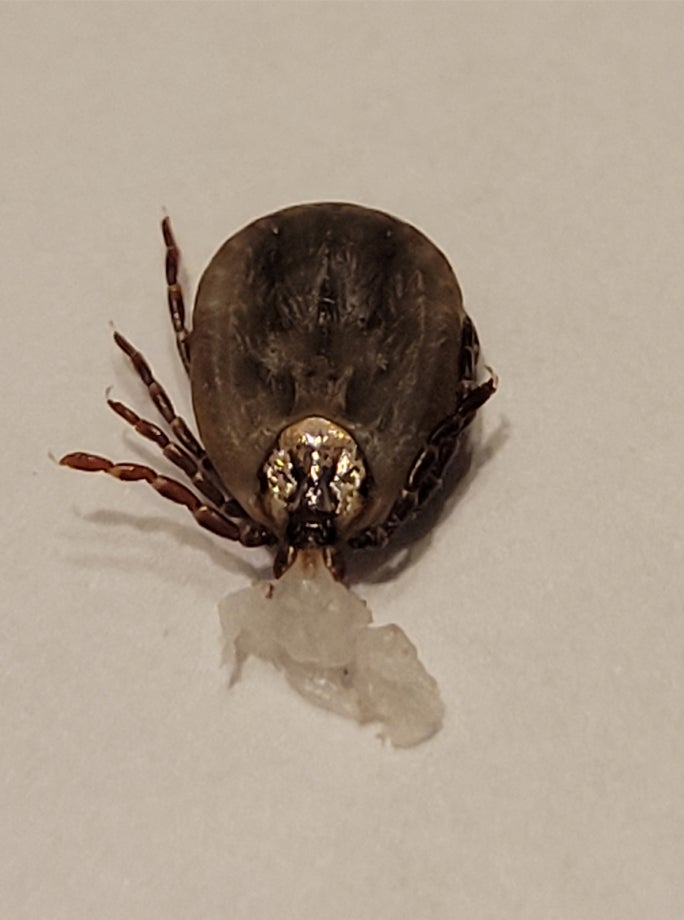
It’s just another way some ticks have for freaking you out. But knowledge is power. You’re right, it is a bit of your skin but it’s also a bit of an amazing substance called tick cement. Tick cement is a rapidly hardening substance produced by the salivary glands of most ticks in preparation for feeding. After cutting a hole in the skin with its scissor-like chelicerae, and inserting its hypostome with its backward pointed barbs into the hole, ticks can begin secreting cement within 5-30 minutes. Tick cement is an exceptionally sticky adhesive, and once hardened, effectively anchors the tick mouthparts to the host.
Tick cement comes in a couple of “flavors”; there’s cone cement which is deposited first and hardens rapidly. After about a day, the tick begins secreting cortical cement which hardens more slowly. Dr. Dan Sonenshine, America’s most eminent tick expert explained that eventually, over the tick blood feeding process, these two types of cement fuse and form a matrix both around the tick hypostome but also filling in gaps between the hypostome and the host epidermis (outer skin layer). Tick cement helps hold the tick in the skin but also helps prevent leakage, and possibly helps protect the hypostome from breakage if the host gets a little aggressive with the tick. In some tick species, the cement infuses and intermeshes with the dermis as well as the epidermis.
Some types of ticks, especially those with longer mouthparts (like blacklegged ticks and lone star ticks) secrete very little cement, while ticks with shorter mouthparts (like American dog ticks) secrete large amounts of cement. The pattern of cement deposition varies among types of ticks, and the degree to which the cement infiltrates the host epidermis and dermis also differs by species. And this species-specific pattern of cement deposition also probably helps determine just how much of YOU comes off along with the tick, even when removed correctly with pointy tweezers. Dermacentor ticks, like the American dog tick pictured above, secrete additional deposits of cement, in various dimensions, onto the skin surface forming flat lateral flanges. Cement aggregations on the skin can help secure attachment of ticks with short mouthparts to their hosts. But it also means that some skin is likely to be sacrificed when removing the tick. We see this to varying degrees in our TickSpotters program in about 10-20 percent of American dog tick pictures submitted, but almost never with blacklegged ticks.
Here’s another amazing fact. When it’s time for the tick to detach–when it’s full of blood–ticks can separate their mouthparts from the cement in as little as 1-2 minutes. How they do that is not yet known. Possibly ticks secrete other enzymes in the saliva, triggered by receptors in the gut signaling the tick that it is full.
We all could use that stuff couldn’t we? Especially when we’re fumbling around with superglue and stick our fingers together.
Reference
Suppan J, Engel B, Marchetti-Deschmann M, and Nurnberger S. Biol Rev. (2018), 93: 1056-1076
